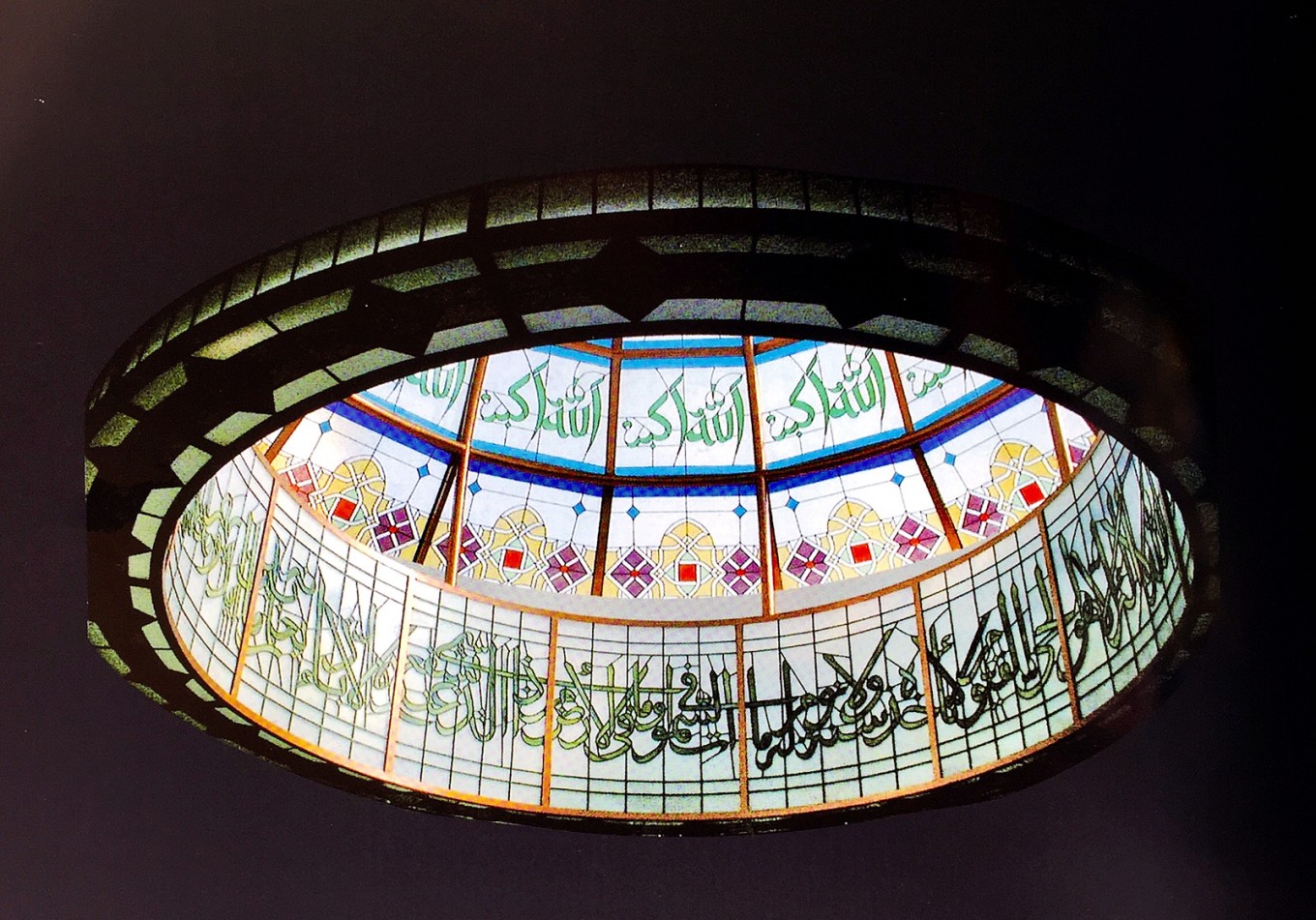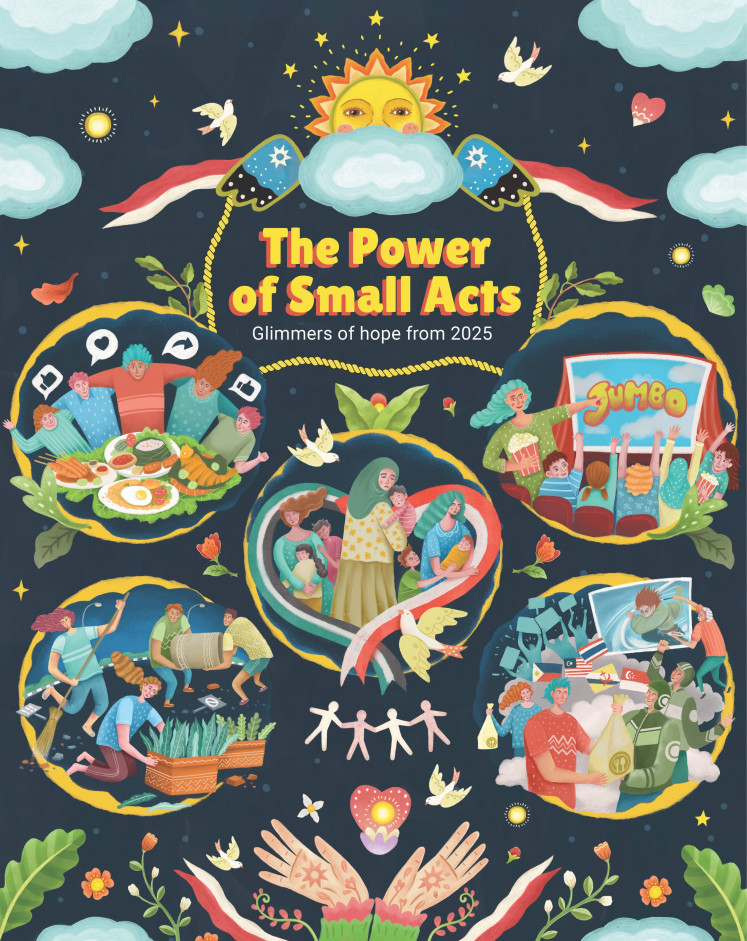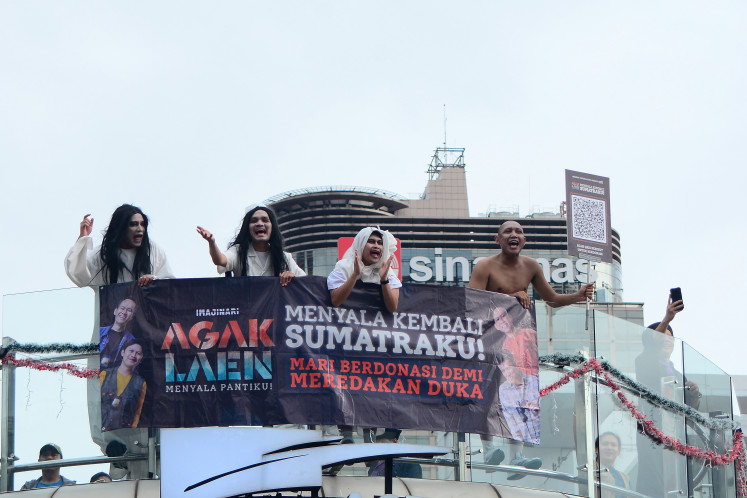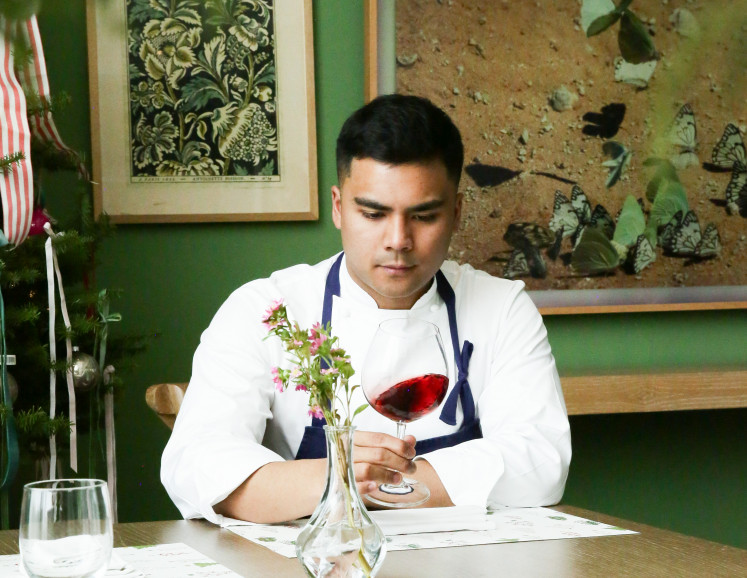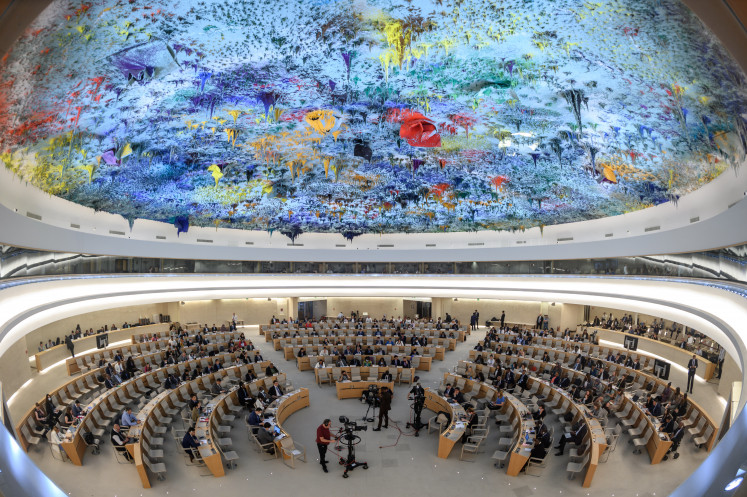Popular Reads
Top Results
Can't find what you're looking for?
View all search resultsPopular Reads
Top Results
Can't find what you're looking for?
View all search resultsThe stained glass artworks of Brian Yaputra
A Catholic finds happiness in creating stained glass artworks for mosques.
Change text size
Gift Premium Articles
to Anyone
O
n the eve of the Islamic day of sacrifice, Idul Adha, a friend visited Al Kautsar Grand Mosque, which is well known for its elegant architecture, in Kendari, Southeast Sulawesi.
After performing his ritual prayer, he observed the walls around him and noticed several windows and ventilators adorned with stained glass art decorations.
“They are exquisitely beautiful and Islamic,” he said.
He learned from the mosque’s management that the creator of the stained glass designs was Brian Yaputra who was born in Semarang, Central Java, in 1947. Brian owns a stained glass art firm in Jakarta and my friend was surprised to find out that he was a Catholic.
Brian’s attractive stained glass patterns not only adorn Al Kautsar Mosque, it also graces 50 other mosques in Indonesia, such as Ar-Rahman in Serang, Banten, Dian AlMahri in Depok, West Java, Al Muthaqin in Brumbung, Tunu in Pangkal Pinang, Bangka Belitung, Al-Aqobah in Palembang, South Sumatra, and two grand mosques in Surabaya,
East Java and Jambi. Dozens of others bearing his stained glass motifs are found in Jakarta, including the Islamic Center Mosque in Tanjung Priok and Ramlie Musofa Mosque in Sunter.
Brian’s stained glass artworks also grace mosques in other countries, such as Zirjah in Dubai and the Syekh Maulana Yusuf Mosque in Cape Town, South Africa.
Brian, who set up the Eztu Glass Art company in 1981, said he was happy with what he had done despite the many challenges he had to endure during the production of his artworks.
“Thousands of small pieces of glass, some as tiny as 7 millimeters, are composed according to fixed patterns, which are highly intricate. “However, handling artistic creations at mosques, no matter how complicated, is my happiness,” he added.
“I am happy because as a non-Muslim, I can share my artistic flair with my Muslim brothers and sisters.”
Brian, who is of Chinese descent, added that he always made new friends whenever he undertook stained glass art projects for mosques.
Read also: Getting to know Asasi Mosque, one of Indonesia's oldest mosques
Meanwhile, mosque managers and architectural designers have no problem over the fact that Brian is a non-Muslim.
Some of the mosque authorities have even expressed their gratitude.
On Idul Adha holidays, Brian is at his happiest because his stained glass art pieces, he says, are part of the celebration.
He is sure that Allah is very fond of such splendor because he has often heard some ustads (Islamic religious teachers) saying, “Innallaha jamilun yuhibbul jamal [Allah is most beautiful; therefore, He is fond of beauty].”
To ensure creativity and success in the stained glass art business, Brian continues to believe in the ethos of hard work and smart work.
The foreign language academic graduate has studied the character of drawing art, the symbolic meaning of forms and ornaments, the properties of glass as well as the art of architecture and interiors, besides tracing the thousands of years of stained glass art history.
Behind all of his efforts, fate also played a part in opening up doors for him.
He said in the 1980s, while traveling by air, he was disturbed by a passenger who kept coughing next to him.
Brian offered him a throat lozenge to relieve his cough. The man was thankful and gave him his business card.
The card showed that his fellow passenger was Dr. Tau Ho, who was the then-chairman of the Hong Kong Architects Association.
Brian told him that he worked as a stained glass crafter. Ho was surprised and after further communication he ordered stained glass artworks to adorn the windows and skylights of the Wingwong Pentecostal Church in Hong Kong. It was this order that motivated Brian. “While I can work for the church, why not for mosques as well?” he thought.
And after that, he created the stained glass decorations of various mosques in Indonesia. His determination to keep developing stained glass art has been stimulated by its long history dating back to 330 CE when Constantine the Great moved the seat of government to Byzantium and renamed it Constantinople.
The city’s stained glass art remained popular through to the 6th century as seen at the Hagia Sophia Cathedral with its large dome, which was built between 532 and 537. Church builders in France and Italy in the 7th century also widely copied the magnificence of Hagia Sophia’s architecture and stained glass elements.
In 1453, the Turks occupied the city and changed its name to Istanbul. Hagia Sophia was turned into a mosque by Sultan Ahmed and it was renamed the Blue Mosque. The stained glass compositions were maintained and the building became a center of fascination. Since then, stained glass designs have been a major fixture of mosques all over the world.

